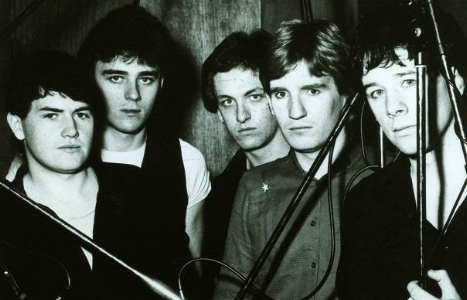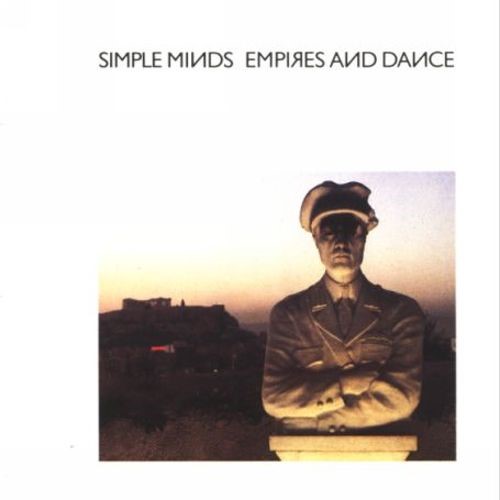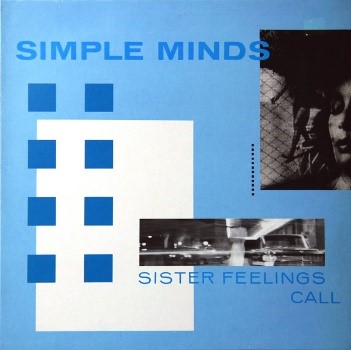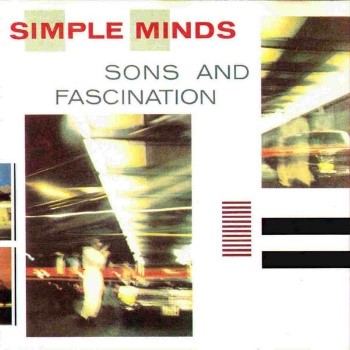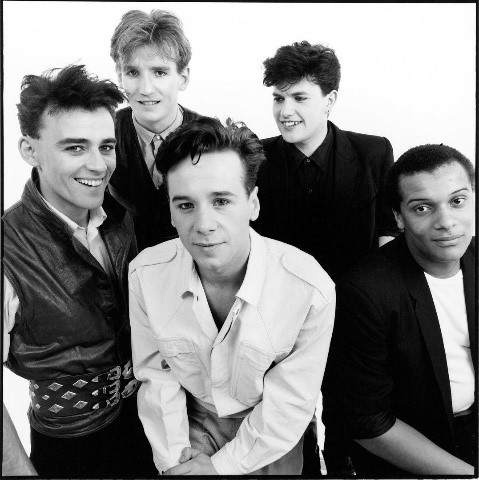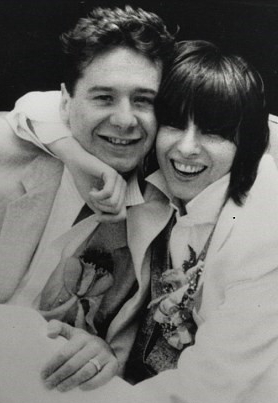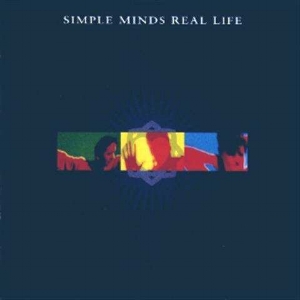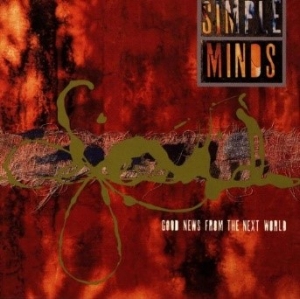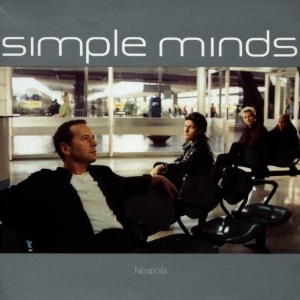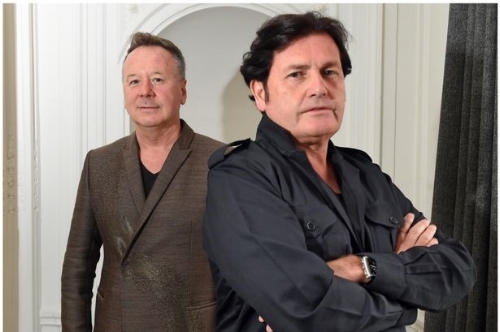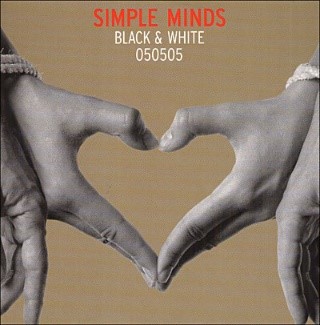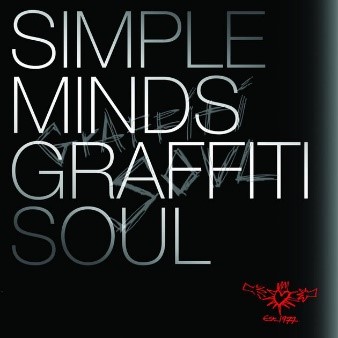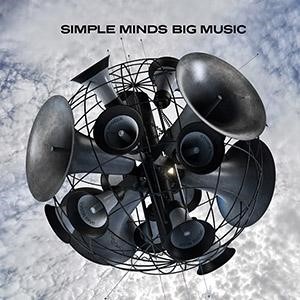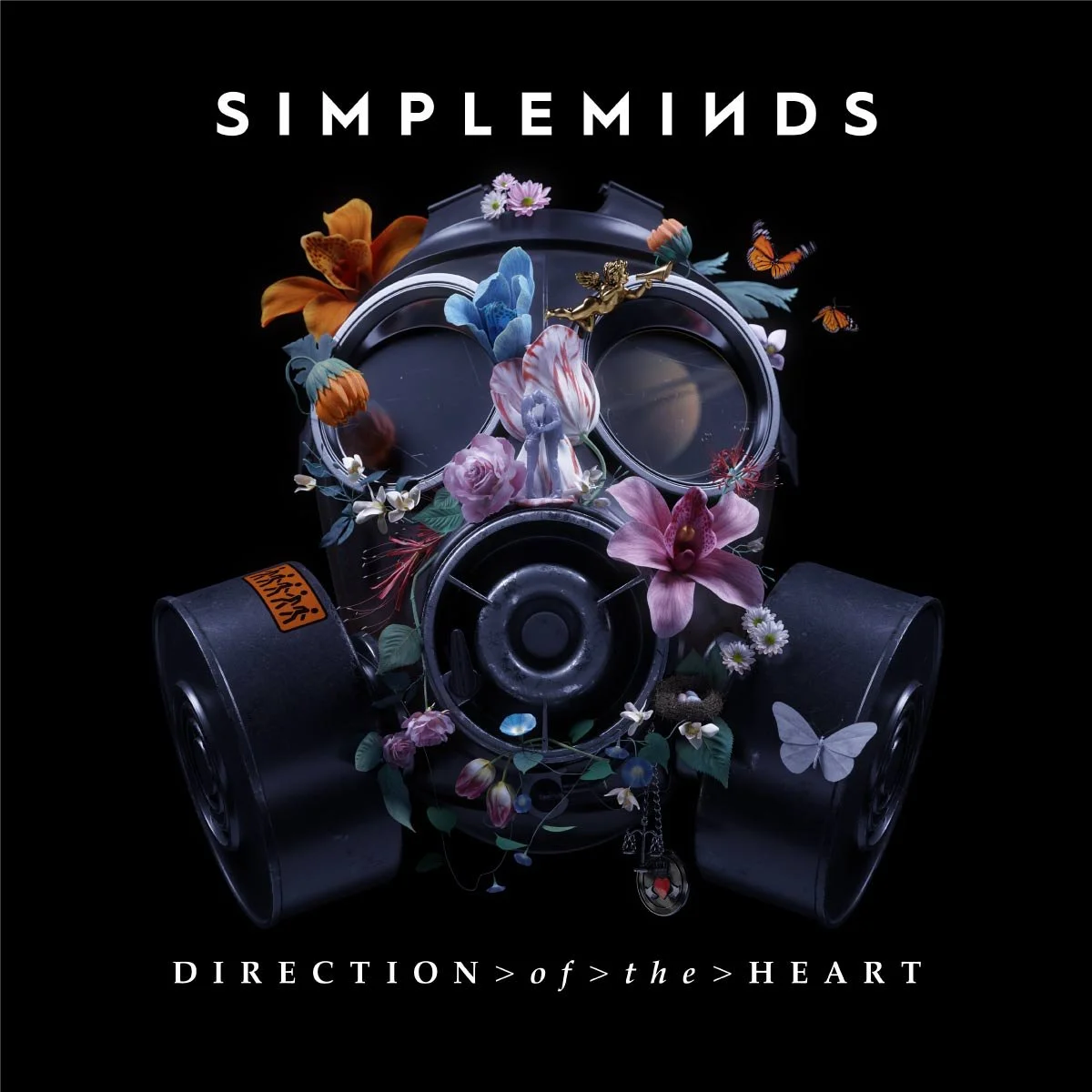Alive and Kicking: A Simple Minds Retrospective
Click on the streaming service of your choice to listen to the playlist you read along.
Simple Minds is an enigma. I don’t know if there are many bands that scaled the heights they did only to slide down into relative obscurity, but who still soldiers on undaunted (mostly). A few years ago, I heard they had released an album and was shocked to learn it was their seventeenth – only to be followed by two more in the years after, including one this year in which they’re now touring. I was shocked since I hadn’t given them a thought in almost thirty years and had not come across any sign of them in the interregnum. Therefore, this profile is to both celebrate their music and accomplishments and check out what they’ve been doing for the past thirty years.
The Playlist
“Someone”
“Changeling”
“I Travel”
“The American”
“Love Song”
“Someone, Somewhere, In Summertime”
“Promised You a Miracle”
“New Gold Dream ('81, '82, '83, '84)”
“Glittering Prize”
“Up on the Catwalk”
“Speed Your Love to Me”
“Waterfront”
“Don't You (Forget About Me)”
“All the Things She Said”
“Alive and Kicking”
“Sanctify Yourself”
“Kick It In”
“See the Lights”
“Great Leap Forward”
“Glitterball”
“Cry”
“Jeweller to the Stars”
“Home”
“Stars will Lead the Way”
“Blindfolded”
“Chelsea Girl”
“Summer”
“Vision Thing”
“Your Name in Lights”
Sometime in the early 1980s my mom was driving me to one of my hockey games and we were listening to the radio. The DJ asked a contest question to win tickets to an upcoming show, “Where do simple minds come from?” My mom and I looked at each other quizzingly. Was it a trick question? The winning caller identified that Simple Minds come from Glasgow, Scotland, to which my mom and I observed, “that’s rather unfair to the people of Glasgow.” Of course, a song was played and we learned the question was not a slight on the cognitive capabilities of Glaswegians and thus was my introduction to Simple Minds and their budding success in North America.
“Someone” \ Life in A Day (1979)
The genesis of Simple Minds started in 1977 when John Milarky invited vocalist and keyboardist Jim Kerr and guitarist Charlie Burchill, friends since childhood, into the punk band, Johnny and the Self-Abusers. They, in turn, recruited additional school friends Brian McGee to play drums and Tony Donald on bass. Just as the band established itself within the Glasgow pub scene and got to releasing their first single, the band split and the four friends stayed together. They rebranded themselves, Simple Minds, taken from the David Bowie lyric from “Jean Genie”, “He's so simple-minded, he can't drive his module / He bites on the neon and sleeps in a capsule / Loves to be loved, loves to be loved.” A prescient source.
Over 1978, there were a few line-up changes with Donald leaving, replaced by Derek Forbes, and Mick MacNeill joining on keyboards to allow Kerr to focus solely on vocals. The band was a bit of a glam act, wearing make-up and adjusting their sound away from the punk edge of Johnny and the Self-Abusers. They were signed by Arista and released their first album in 1979, Life in A Day.
It was a very solid album, with glam styled songs like “Chelsea Girl” and “No Cure” (which was originally called “Cocteau Twins” when it was performed by Johnny and the Self-Abusers, a name picked up by locals Robin Guthrie and Elizabeth Fraser for their band name). There were also some pop songs and edgier, punk-styled songs as the band explored their capabilities and searched for their sound. “Someone,” the first track, showed the combination of these influences. The LP was a reasonable success, reaching the top forty in the UK album chart.
“Changeling” \ Real to Real Cacophony (1979)
Perhaps sensing the changing styles of the time, the band moved noticeably towards a darker, moodier, and more rhythmic approach for the second album, Real to Real Cacophony, released the same year as the debut. There were long instrumental passages and experimental uses of timing and overdubs.
The standout track on the LP was the single, “Changeling”. It was a strong signal of where they were headed, embracing new wave styles with smartly layered, edgy guitars, fluid basslines, and catchy synths. It was a cool song that still grabs my attention today. It’s a classic of the early new wave era. The change in style did not build their audience and the album failed to chart.
Early Simple Minds (L to R): Charlie Burchill (guitar), Mick MacNeill (keyboards), Brian McGee (drums), Derek Forbes (bass), Jim Kerr (vocals)
“I Travel” \ Empires and Dance (1980)
The third album, Empires and Dance, blended the moody instrumentation of the second LP into more traditional pop song structures and continued to evolve their new wave style. Still heavily founded on the rhythm section with melodies set out by Kerr’s vocals and the synth, the album gained some chart attention but had no breakthrough single.
“I Travel” and “Celebrate” were the singles but not well promoted – actually, the band had left Arista by the time the second single was issued. “I Travel” had more pace and pop sensibility than their prior work and became another new wave classic. It had that “I Feel Love” vibe that so many synth bands were copping from the Georgio Moroder and Donna Summer hit of 1977.
“The American” \ Sister Feelings Call (1981)
“Love Song” \ Sons and Fascination (1981)
Now on Virgin Records, Simple Minds released the next two albums on the same day. Sister Feelings Call was a bonus to Sons and Fascination at first before being issued on its own.
The lead single, “The American,” was on that bonus disc. It was a more polished, larger, and impressive song than anything they’d released. It also sounded like the Simple Minds we would come to know over the coming years. You could hear how it built on the sounds of Empires and Dance but the interplay between guitar, synth, drums and bass were more intricate, with each playing its own, important part to the overall sound. Kerr’s vocals were now front and centre too, with a booming chorus that leveraged his deep voice. It was the first single since their debut single, “Life in A Day,” to get on the UK singles chart, but only to #59.
“Love Song” was the next single, and wow what a song. Riding an infectious bassline, shimmering synths, and scratchy guitar, the song caught an undeniable groove. It was the kind of song you fall in love with on first listen. Purely new wave, it was one of the leading examples of the era. It also got the band attention outside of the UK, reaching #38 in Canada, #17 in Australia, and #16 in Sweden. The album reached #11 in the UK and cracked the top ten in Sweden and New Zealand. Success in the US remained elusive.
“Someone, Somewhere, In Summertime”; “Promised You A Miracle”; “New Gold Dream (‘81, ‘82, ‘83, ‘84)”; “Glittering Prize” \ New Gold Dream (‘81, ‘82, ‘83, ‘84) (1982)
Drummer Brian McGee left, eventually joining German band, Propaganda. He was first replaced with Kenny Hyslop, who provided the beats for “Promised You a Miracle,” before being replaced by Mike Ogletree, who played as the band developed the songs for the next album. He then handed the sticks over to Mel Gaynor, an experienced (at only age twenty-two) session player who could really pound the skins. Gaynor played on most of the recordings for the album. All of this is worth noting as the sound of the band continued to evolve through these changes, and the importance of the drums was critical.
The sixth album was their crowning achievement. New Gold Dream is one of the best new wave albums ever and one of the best of the 1980s. I could go on at length about each song, singing its praises – it is a well-worn album in my record collection.
The premise was similar throughout the LP. The brilliant and perfectly balanced elements they’d achieved in “Love Song” were now present in every track. The keyboards provided character and infinitely memorable hooks, almost making you forget this was a band that had mostly relied on drum and bass to that point. Yet, the rumbling bass and thundering drums still provided ample foundation, making the synths shimmer and Kerr’s vocals more dramatic. The songs had an epic feel that most new wave tunes failed to achieve. The quintessential track pulling those dynamics together was, “Glittering Prize,” easily one of my favourite songs of all time.
To find a single album with songs such as these four playlist selections was rare and could obscure the greatness of the rest of the album due to their prominence. Yet, the sound was still too outside the norm to push the band fully to the top. In the UK, the LP reached #3 and cracked the top ten in Australia, New Zealand, and Sweden. The three singles (those on this playlist, less the title track which was only issued in Italy) did not crack the top ten in the UK but served to build the band’s reputation as a leading act at home and abroad. I imagine it was about this time that radio DJs started talking about where Simple Minds were from.
SM in ‘84 (clockwise from left): Charlie Burchill, Derek Forbes, Mick MacNeill, Mel Gaynor, Jim Kerr
“Up on the Catwalk”; “Speed Your Love to Me”; “Waterfront” \ Sparkle in the Rain (1984)
Though not as captivating as its predecessor, Sparkle in the Rain was still a fantastic album and a very strong follow-up. It was also impressive that it was a very different sounding record. The synths faded to the back, Gaynor’s pounding beats came even more to the fore, and Kerr’s vocals got louder and more vast. The result was outsized, stadium-oriented songs that shifted the band’s sound more into rock, with a pop sensibility.
One reason for the change was Steve Lillywhite, who produced the album. He encouraged Simple Minds to write the songs together so the instruments and vocals worked in unity. This resulted in less nuance and more powerful arrangements, which lost the beautiful intricacy of their prior sound. Lillywhite’s wife, the inimitable Kirsty MacColl, also performed on two songs on the LP, “Speed Your Love to Me” and “Street Hassle”.
Another factor to consider was the rise of U2, who Simple Minds had met while on tour in Europe. Seeing U2’s album, War, reach #1 in the UK and #12 in the US the prior year by moving to an anthemic rock sound must have made an impression. Kerr denied this, but the coincidental shift in Simple Mind’s sound to a similar style was notable. Burchill has also often utilized a scratch style of guitar playing, similar to U2’s Edge. The U2 comparison has dogged the band for much of their career since this album.
Kerr and Hynde
The band’s shift paid off as it reached #1 in the UK and lofty spots on other charts around the world (only #69 in the US though). The three singles (on the playlist), fantastic as they were, failed to crack the top ten in the UK (“Waterfront” reached #1 in New Zealand). Regardless, the band was undoubtedly gaining a larger audience and were playing in larger venues. Kerr also made headlines with his marriage to Chrissie Hynde of the Pretenders.
This was the album in which I first got into the band, playing it endlessly in the summer of 1984 with my friends, along with the discovered New Gold Dream LP. I also attended my first concerts as a young teenager – three in a single week. I first saw the Psychedelic Furs with Talk Talk, then the next night Bruce Springsteen touring for Born in the USA, and then two nights later Simple Minds with Toronto band, The Tenants, at Kingswood Music Theatre at Canada’s Wonderland. I must admit that poor Jim and the boys could not equal the energy and rapture I’d felt at the first two shows that week. However, it was still a good concert and the crowd certainly responded favourably – though not so much for the DJ who introduced the band, being from local classic rock radio station, Q107. He was booed, showing Simple Mind’s core audience in Toronto were listeners of the free-form alternative station, CFNY (Kerr, to this day, acknowledges the role that CFNY played in helping launch the band in North America). However, the radio shift was also a harbinger of where things were headed for this band, since they would be more comfortable on rock and pop stations than alternative ones going forward.
“Don’t You (Forget About Me)” \ The Breakfast Club Soundtrack (1985)
Five things about this, Simple Minds’ biggest song.
First, it was not written by the band but by producer Keith Forsey and Steve Schiff (from Nina Hagen Band). Simple Minds did not want to record a song they did not write and had to be encouraged by their label and Chrissie Hynde to take it on. They recognized the instant appeal of the track.
Second, this was a great song that continued the expansive sound developed on Sparkle in the Rain. But it also had a sing-along element that appealed to a broader, pop-oriented and collegiate audience. The “la la la la” vocal at the end was ad-libbed by Kerr during demo recordings, in expectation of developing a final verse. Forsey liked it and persuaded it be in the final cut.
Third, it was the last song to include bassist Derek Forbes, who had a falling out with the band and left, eventually joining Brian McGee in Propaganda.
Fourth, as the feature song from the John Hughes movie, The Breakfast Club, a huge success in 1985, it gave the band their elusive breakthrough in the US. The song went to #1 in the US and Canada and to top ten positions around the world. Interestingly, it only reached #7 in the UK, which was perhaps a telltale sign that the audience there wasn’t as with them on the change in sound.
Lastly, it ruined Simple Minds, pushing them in a musical direction that lost their character, distinction, success, and the core audience they had developed over the first seven albums. It was the peak from which they would tumble.
“All the Things She Said”; “Alive and Kicking”; “Sanctify Yourself” \ Once Upon a Time (1985)
Admittedly, their demise was immediate as they rode their new profile to success with the next couple of albums. Once Upon a Time, their eighth LP, unabashedly saw the band embracing the expansive, pop-rock format made for chant and repeat refrains in cavernous stadiums. “Alive and Kicking” was tailor-made for that and brought them another top ten hit in the US and another #7 spot in the UK. The album reached #1 in the UK, their second in a row.
Other singles, “All the Things She Said,” “Sanctify Yourself,” and “Ghost Dancing” all did reasonably well and revealed the general consistency of the album. There was also the addition of new, soulful backing vocals from Robin Clarke of Chic, which furthered the transition to an American music style – notably several years before U2 would do the same with Rattle and Hum (1988). This version of Simple Minds bore little resemblance to the band that had taken your breath away (mine at least) just a few years prior. There were some structural similarities – “Love Song,” “The American,” and “Waterfront” had the expansive sound they now fully embraced – but there was nothing on Once Upon a Time to compare to the brilliance of New Gold Dream.
“Kick It In” \ Street Fighting Years (1989)
After long tours promoting Once Upon a Time, the band released the next album a distant four years later. Somehow, I ended up with a cassette copy of this LP (I certainly didn’t buy it) but I don’t think I played it more than once or twice. It was a wretched album, lacking any hooks, intriguing or challenging music, or the enthralling instrumentation of the band’s prior work.
Line-up changes ensued as it was MacNeil’s last as keyboard player, Gaynor was demoted back to a session player, and the replacement bassist left in the middle of the recording sessions. It was now just Kerr and Burchill, looking for a way forward.
The soul elements of the prior LP were abandoned but not replaced with anything of note – leaving just a collection of anthemic songs shouting to no effect. There was a more political bent in the lyrics, a direction Kerr had been moving towards during the past albums and perhaps affected by his involvement in projects like Live Aid and support for the anti-apartheid movement. The album included songs about apartheid from an EP released just prior that also included a cover of Peter Gabriel’s, “Biko”.
Regardless my opinion (which can reliably be taken to like things that won’t sell well), the UK press lauded the album and it reached #1 in the UK, making it three in a row for Simple Minds. It did not do as well in the US, peaking at #70, while none of the three singles charted in the US or cracked the top ten in the UK. This was the last in which I took any notice of Simple Minds and the last LP in which they’d make an impression on wider audiences.
“See the Lights” \ Real Life (1991)
Now a trio, with Gaynor on drums still in the mix, all the songs on this album were written by Kerr and Burchill. There was a sea change in music over the few years since their international success, and big sounding rock bands had been supplanted by retro, psychedelic sounds and acid-house electronics. Stripped down, fuzzy, grunge sounds were burbling under the surface. It has been remarkable how few of the big acts from each of rock and pop’s decades survive into the next. Simple Minds found themselves losing ground in the markets they’d cracked in back half of the ‘80s, other than in the UK.
Real Life, their ninth album, revealed a more subdued and easier going Simple Minds. Some subtlety was re-introduced, and the songs were more varied and generally anchored in a traditional, R&B style. Many songs could have been at home on a Sade album. The LP reached #2 in the UK, ending their string of #1s, and only one of the four singles, “Let there Be Love,” cracked the top ten in the singles chart. It was not a great album, but it was better than the last and achieved the feat of getting Jim Kerr to stop bellowing as much.
“Great Leap Forward” \ Good News from the Next World (1995)
Mel Gaynor left and the band was now a duo supported by a variety of session musicians. After a break, they returned four years later with the tenth LP, Good News from the Next World. The songs expanded a bit again but did not pursue the lofty dynamics of their late ‘80s repertoire. More electronics entered the mix, making songs such as the single, “Hypnotised,” reflect the recent sounds of Detroit or Manchester. However, this also meant the album lacked focus, and at this point it was not clear who Simple Minds were or what they were trying to achieve musically. The songs were listenable, recognizable R&B compositions competently played, and had pleasing melodies, but there was nothing about this album that demanded your attention.
“Glitterball” \ Néapolis (1998)
Indicative of their altered status, Simple Minds were released by their label. Kerr and Burchill still wrote songs and toured extensively, notably joining the ‘Night of the Proms’ tour which partnered orchestras to pop acts (they would join the tour four more times in their career).
By the time of their return to the studio to record the next album, Néapolis, they were signed to Chrysalis Records. They had also reunited with Mel Gaynor on drums (though he ended up only playing on one song on the LP, the single, “War Babies”), Derek Forbes on bass, and Brian McGee on keyboards (only for the rehearsals). It was almost a full reunion to the line-up of their creative heyday, even if not for the entire recording.
The result was an album with heavier electronics, sounding once again a lot like U2’s music of that period. There were some interesting songs and experimentation with the electronics, but again no songs that brought you to the edge of your seat.
It appeared fans were taking notice. The album was not released in the US and only reached #19 in the UK, their first to not crack the top ten since Sons and Fascination and Sister Feelings Call. Neither of the singles, “War Babies” and “Glitterball” cracked the top ten in the UK, making it the first LP to not achieve that since “Don’t You (Forget About Me)” had breached that threshold.
Jim Kerr and Charlie Burchill
“Cry” \ Cry (2002)
“Jeweller to the Stars” \ Silver Box / Our Secrets Are the Same (2004)
The band started to record their next album, Our Secrets Are the Same, in 1999, during which Gaynor and Forbes were displaced by members of Kerr’s brother’s band, as well as other guests. This new lineup started to perform live as Simple Minds, leaving Gaynor and Forbes to wonder their fate as members (or not).
Meanwhile, as the recording industry was undergoing upheaval in the new age of file sharing, the band’s label, Chrysalis, was dealing with merger issues with EMI. It wouldn’t issue the album once completed and eventually dropped the band. To make matters worse, it was leaked onto the internet, a not uncommon event in the early days of online music. At this point, Kerr and Burchill packed up Simple Minds. Kerr (who had split with Hynde back in ’90 and had also been married to actress Patsy Kensit from ’92-‘96) retreated to Italy to run a hotel.
The pair kept working together, however, playing around with ideas. In Italy, Kerr proved to be a sought-after collaborator, which encouraged him to keep working. Simple Minds signed with Eagle Records in 2001 and decided to kick things off with an album of cover songs, Neon Lights. The singles were their takes on Patti Smith’s, “Dancing Barefoot”, and Pete Shelley’s, “Homosapien”.
After releasing a greatest hits package, the band released their next LP, Cry, in 2002. The lineup was similar to that of (the still unreleased) Our Secrets Are the Same, though on tour they had to recruit replacement players, which included their old standby, Mel Gaynor. The Cry album was solid, with a notable return to smoother melodies and some acoustic pieces, a style rarely heard on Simple Minds’ albums. Perhaps it was the Italian influence, but there was a grace and depth to the music not heard before. The songs invited you in rather than shouting you away. Kerr sounded like a singer and not a carnival barker, rediscovering his resonant voice for uses other than being heard over a cacophonous wall of sound. The title track was lovely, suggesting Kerr and Burchill had perhaps been listening to the likes of The Verve.
In 2004, a box set, Silver Box, was issued. It included the full album, Our Secrets Are the Same, allowing songs like the lovely, “Jeweller to the Stars,” to be properly released.
“Home” \ Black & White 050505 (2005)
“Stars Will Lead the Way” \ Graffiti Soul (2009)
Where the hell had “Home” been for the past twenty-five years?! What a great song! It returned the band to alternative radio in the US despite not being released there. The entire LP, Black and White 050505 (a reference to its release date) was very listenable, with the duo settling into a basic, R&B and pop style with a little retro-alternative edge at times. It was comparable to later music from Echo & The Bunnymen and, of course, U2. At various times Kerr even sounded like Bono.
2009’s Graffiti Soul was much the same. Again, there were fetching songs like “Stars Will Lead the Way,” helping the LP to reach the top ten in the UK, their first to get that high since Good News from the Next World fourteen years earlier. The package in both vinyl and cd also included a second disc, Searching for the Lost Boys, which featured covers of bands such as Siouxsie & The Banshees, Magazine, The Stranglers, Nick Lowe, and Massive Attack.
“Blindfolded” \ Big Music (2014)
“Chelsea Girl” \ Acoustic (2016)
“Summer” \ Walk Between Worlds (2018)
Jim Kerr did a solo project in 2010 under the name ‘Lostboy!’, yet Simple Minds continued, mining their back catalogue with greatest hits, rarities releases, and live albums. Kerr and Burchill also joined with others to release new music.
In 2014, there was Big Music, finally labelling the music by its ambition, and in 2016 an acoustic album of their past hits, appropriately titled, Acoustic. “Chelsea Girl,” recall, was from the debut LP and sounded great with the stripped-down treatment. Big Music blended the band’s rock and pop with the ever-present flourishes to the outsized production for big venues. “Blindfolded” was another great song and sounded current, even it was really hard to tell it was Simple Minds.
This year they have released their nineteenth album, Walk Between Worlds. It is not bad, but once again not something to generate excitement. It settles into the generic Simple Minds sound we’ve heard for the past thirty years, with some modern elements thrown in. It’s big, well-produced, and has many good moments, but overall lacks a groove and personality to grab you and make you want to hear it over and over again.
This is the problem, for me at least. This band has lost their identity. The songs are generally solid, well written and performed well, with some experimentation and updating for the times. But there is no signature sound or cohesive strain that ties them to their roots and any semblance of what the Simple Minds project has been about. The degree to which I love the first seven albums is in direct opposition to how indifferent I am to the following twelve.
My criticism, admittedly, is a bit unfair. The band has stuck to the basic R&B and rock style for the past forty years, despite ever-declining commercial success. Such is their prerogative. So, consistency has not been an issue and has a musical brand, even if it lacks distinction. I did not expect them to stick to their early ‘80s new wave style in perpetuity. That would not have been possible without devolving into parody. Partly, I lament their move from music I loved to music I barely like, but more so I am disappointed they stopped pushing boundaries and making music that was groundbreaking, to revert to styles that were well-trodden.
Regardless, Simple Minds remains an important and innovative act of the early years of modern rock, as brief and bright as that contribution was in the annals of their career.
UPDATE November 2025
Despite my criticisms of the later career of Simple Minds, I also regretted not seeing them when they played Massey Hall in Toronto in 2013. It was only their third show in Toronto over the prior twenty-two years, a period in which I had mostly ignored them. I had a nostalgic itch to hear those early, great songs live once again. Maybe I also wanted to replace the lacklustre impression I had of the show I saw in 1984. Many bands of that era now produce shows far superior to their younger selves, so I was hopeful.
Therefore, I saw them at the Sony Centre in 2018, just days after this original profile was published (pics from the show are below). It was, um, okay, and I’ll leave it at that (using a canned recording of the bass intro to “Waterfront” was a bit unforgiveable). The performance of “Theme for Great Cities” to open the second set was fantastic. The crowd was clearly enjoying the show and Jim Kerr was as enthusiastic as ever. And admittedly, it was a great setlist, spanning their entire career with lots of early gems. Nonetheless, I passed when they came through town again this past summer (though it was hard to do since Modern English and Soft Cell were also on the bill, but I do loathe stadium shows).
Over the past seven years, Simple Minds have only released one more album, in addition to many more hits packages and live albums. There was a 2019 single, “For One Night Only,” issued in conjunction with a greatest hits release, 40: The Best of 1979-2019. It was an odd track that mixed their early new wave sound with a disco groove. It did not work well.
In 2022, as is common in the streaming era, singles started dropping in advance of the album, Direction of the Heart, released in September. It saw them fully in their bombastic, thumping style, in a contemporary pop style. It included a collaboration with Russell Mael of Sparks, on the track, “Human Traffic.” The only track I found bearable was the opener (and second single), “Vision Thing.” The album was favourably received by critics and charted highly, which has little relevance in modern times.
Next, there was a single released in 2023 of a cover of T-Rex’s, “Get It On,” done with ‘80s Australian new wave contemporaries, Icehouse. It was a kicker, but really, any decent version of that song will jump.
This was followed with a single, their last of original material as of this writing, “Your Name in Lights”. It was released in December 2024 to accompany the debut of a documentary on the band, Everything is Possible. The track was not bad, leaning into their ‘80s synth vibe. Kerr even cited Kraftwerk and Brian Eno as influences. Harkening to their Once Upon A Time era, the song also featured soulful vocals from Sarah Brown, meant to reach out to Aretha Franklin as a muse.






